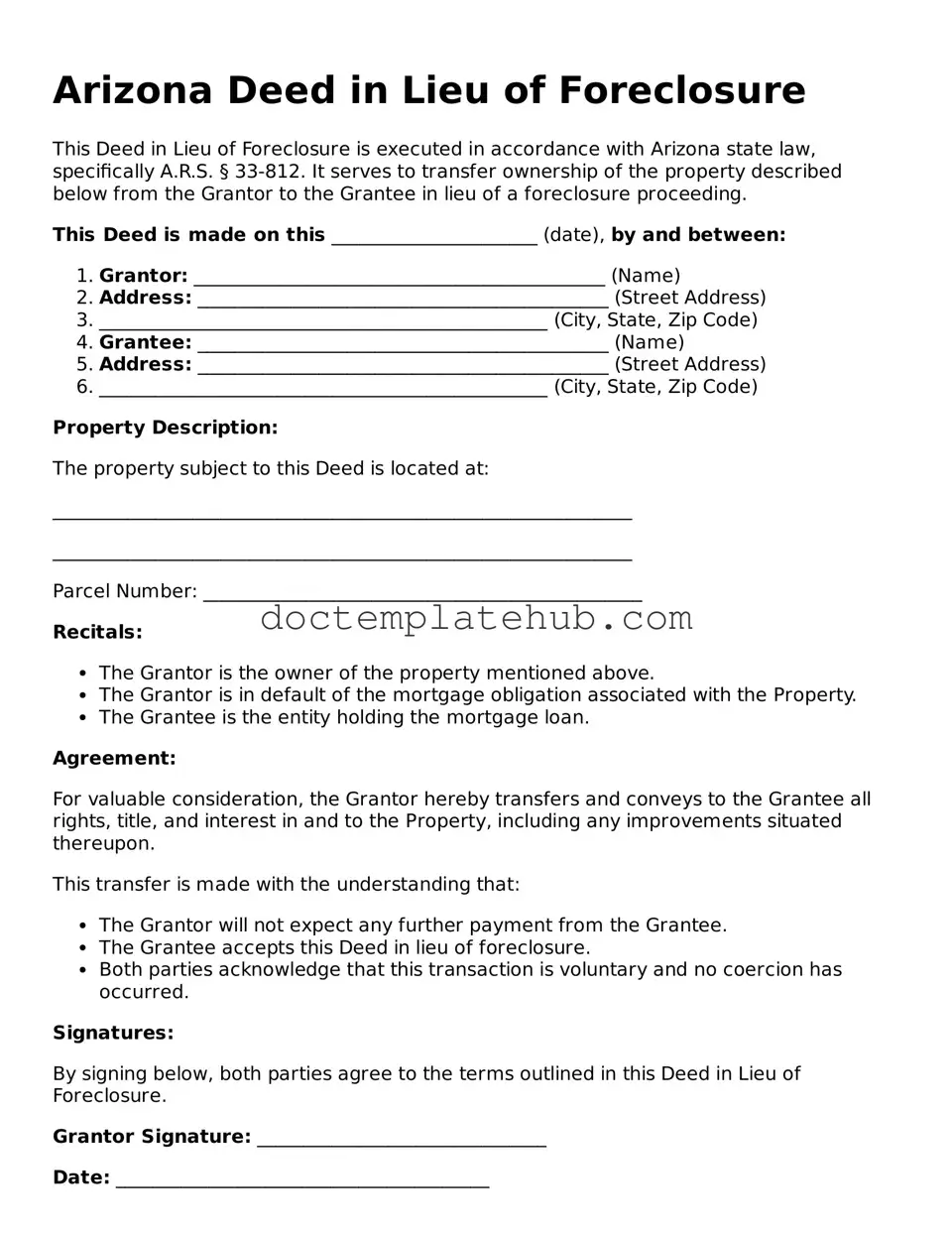What is a Deed in Lieu of Foreclosure?
A Deed in Lieu of Foreclosure is a legal document that allows a homeowner to transfer the title of their property to the lender in exchange for the cancellation of the mortgage debt. This option can help avoid the lengthy and costly process of foreclosure.
How does a Deed in Lieu of Foreclosure work?
When a homeowner decides to pursue a Deed in Lieu of Foreclosure, they must first negotiate with their lender. If both parties agree, the homeowner signs the deed, transferring ownership of the property to the lender. In return, the lender typically forgives the remaining mortgage balance, relieving the homeowner of the debt.
What are the benefits of a Deed in Lieu of Foreclosure?
This option can provide several advantages. It can help homeowners avoid foreclosure, which can severely impact their credit score. Additionally, the process is usually quicker and less expensive than foreclosure. Homeowners may also find it easier to negotiate terms with the lender compared to a foreclosure situation.
Are there any drawbacks to a Deed in Lieu of Foreclosure?
While there are benefits, there are also potential downsides. Homeowners may still face a negative impact on their credit score, although typically less severe than a foreclosure. Furthermore, lenders may require the homeowner to prove financial hardship, and some may not agree to a Deed in Lieu of Foreclosure if the property has other liens or issues.
Who is eligible for a Deed in Lieu of Foreclosure?
Eligibility can vary by lender, but generally, homeowners facing financial difficulties who can no longer afford their mortgage payments may qualify. It’s essential to demonstrate that you have exhausted other options, such as loan modifications or short sales, before pursuing this route.
What is the process for obtaining a Deed in Lieu of Foreclosure?
The process typically begins with contacting your lender to discuss your situation. If the lender is open to the idea, you will need to provide documentation of your financial hardship. After negotiations, if both parties reach an agreement, you will sign the deed and transfer ownership. Make sure to keep copies of all documents for your records.
Can a Deed in Lieu of Foreclosure affect my credit score?
Yes, a Deed in Lieu of Foreclosure can impact your credit score. While it is generally less damaging than a full foreclosure, it still signifies that you were unable to meet your mortgage obligations. The exact effect on your score will depend on your overall credit history and the scoring model used.
What happens to my mortgage payments after a Deed in Lieu of Foreclosure?
Once the Deed in Lieu of Foreclosure is completed, you are no longer responsible for making mortgage payments on that property. The lender will assume ownership, and your obligation to pay the mortgage will be canceled, assuming all terms of the agreement are met.
Can I buy another home after a Deed in Lieu of Foreclosure?
Yes, you can buy another home after a Deed in Lieu of Foreclosure, but it may take some time. Most lenders will require a waiting period before you can qualify for a new mortgage. This period can vary, often ranging from two to four years, depending on the lender’s policies and your overall credit situation.
Should I consult a lawyer before signing a Deed in Lieu of Foreclosure?
It is advisable to consult a lawyer before signing any legal documents, including a Deed in Lieu of Foreclosure. A legal professional can help you understand the implications, ensure that your rights are protected, and assist in negotiating terms with the lender.
